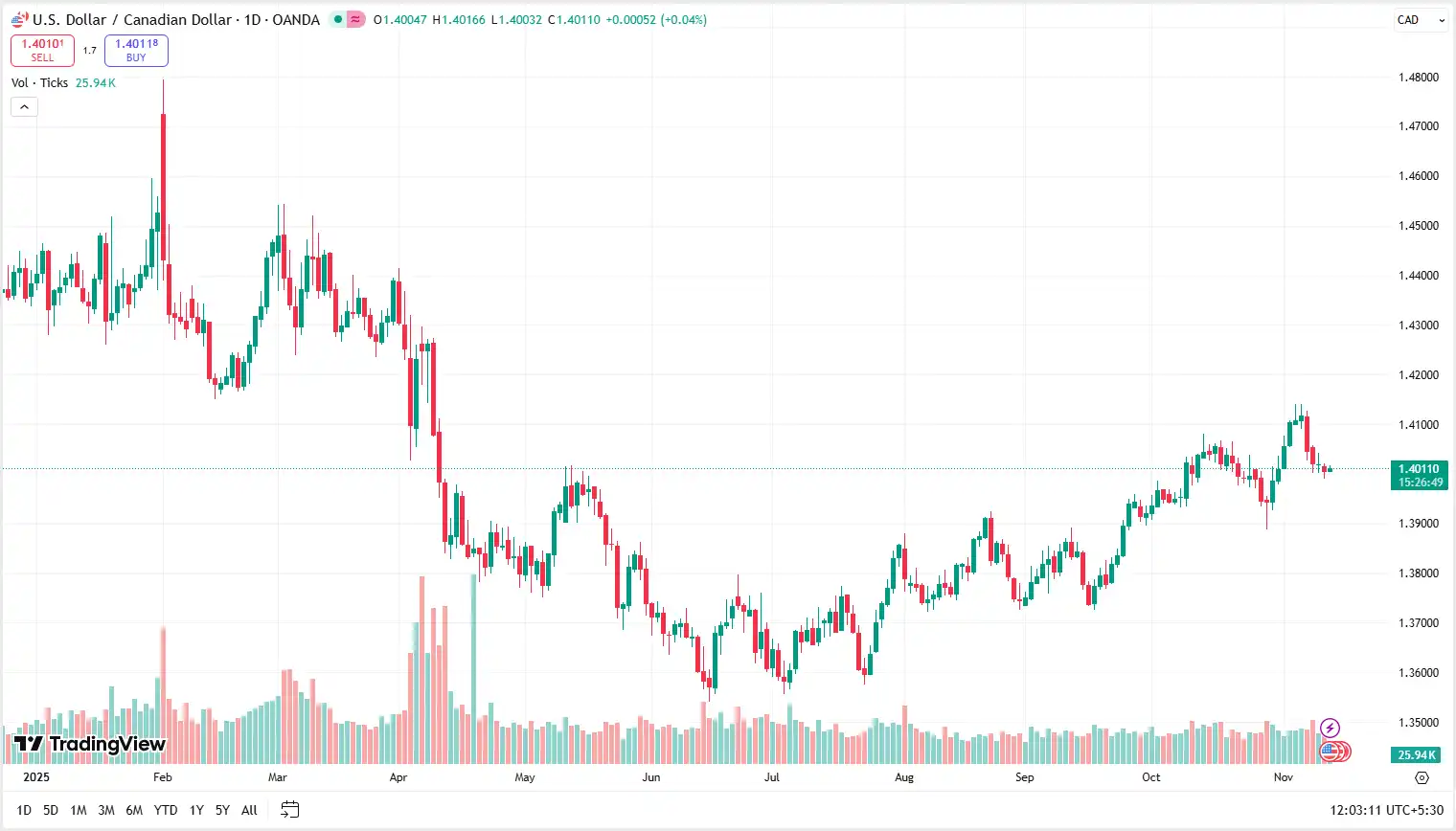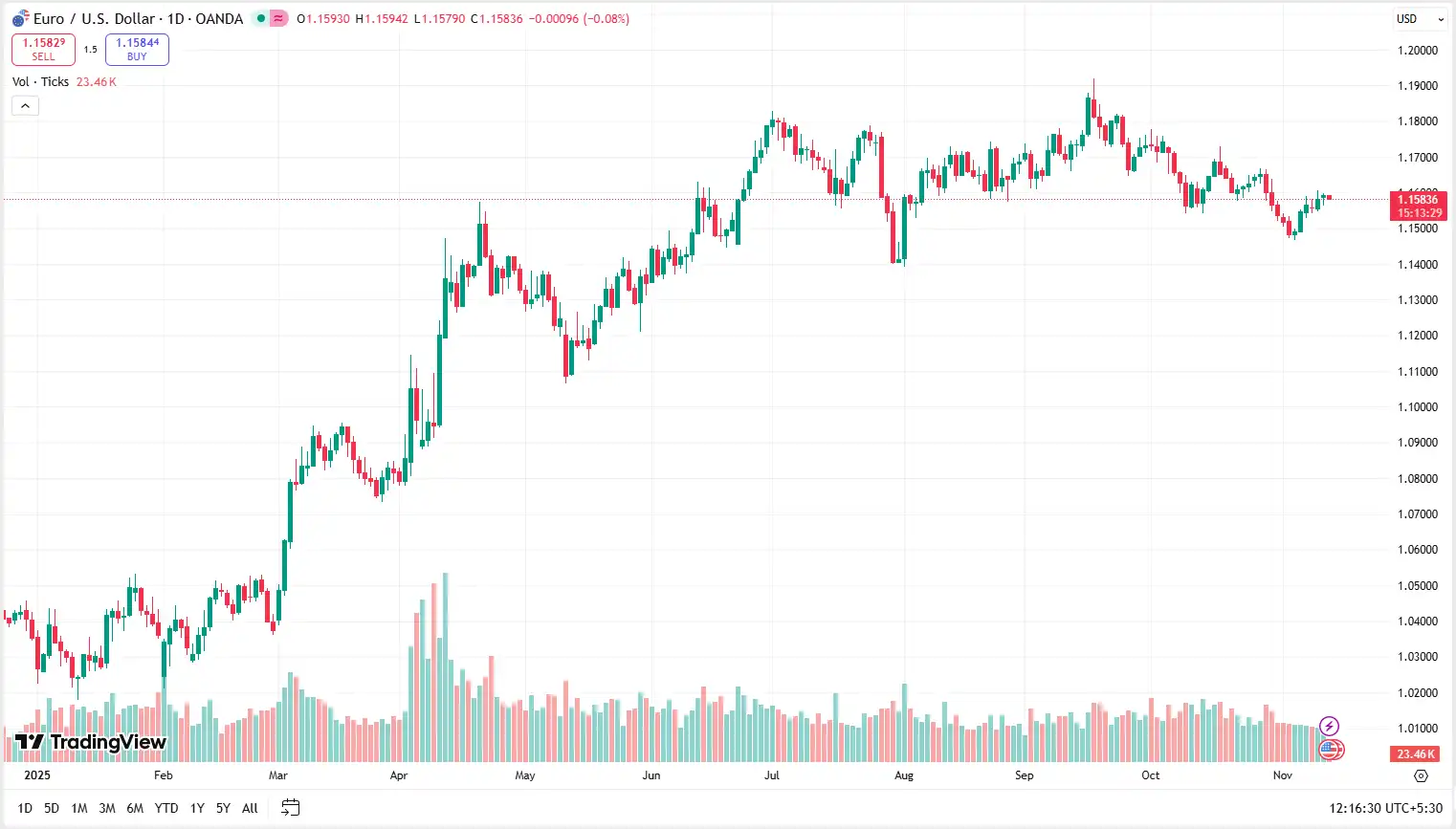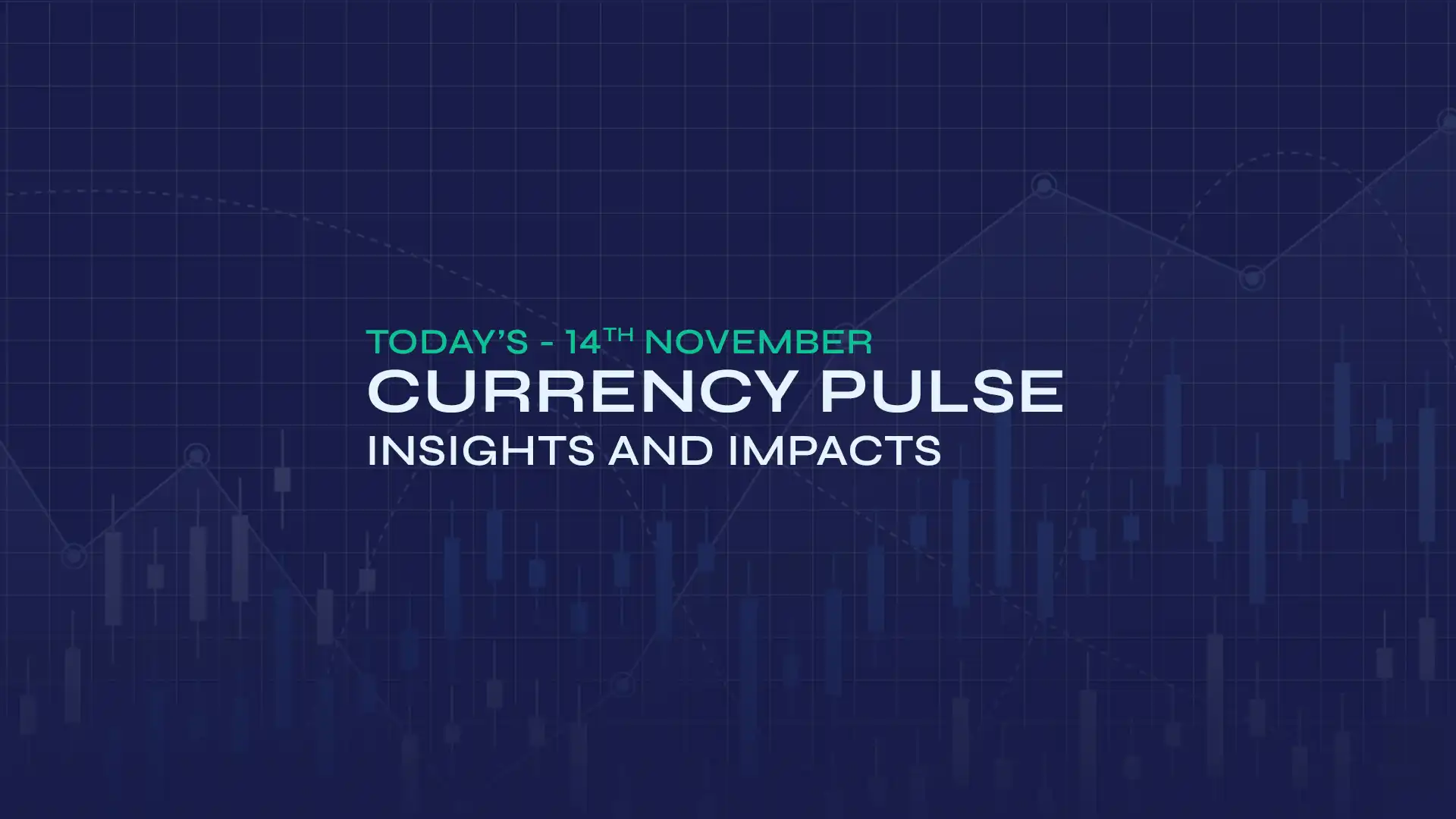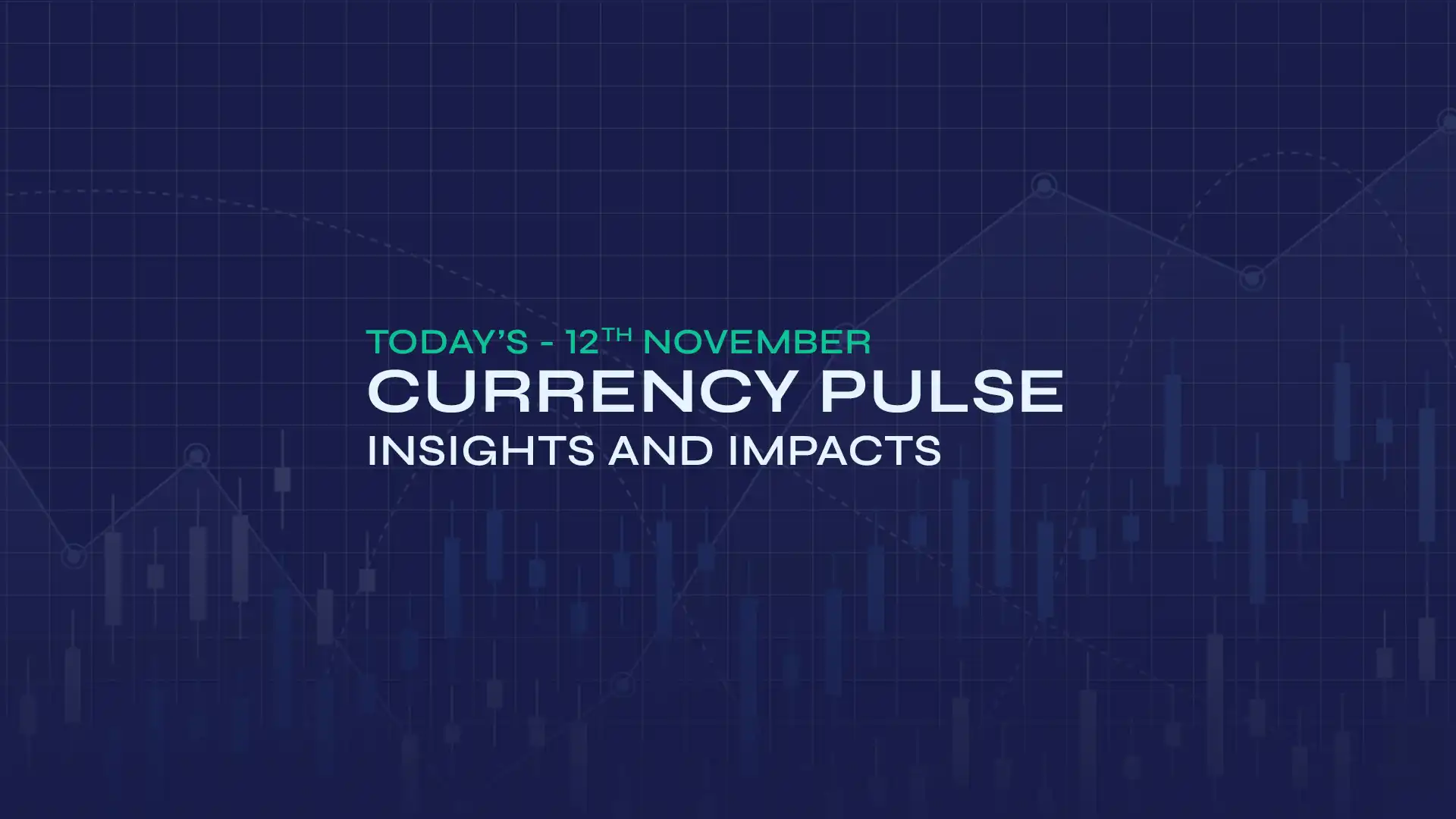GBP/USD remained under mild downward pressure trading near 1.3120[1] in Thursday's early trading hours. The consolidation is believed to have stretched into a third session as traders shun directional commitments before the flash Q3 GDP[2] release by the UK. The pullback indicates the loss of bullish energy following the highs last week, and the two are now floating at slightly higher levels than the original support areas, which indicates that markets[3] are on hold awaiting new catalysts.
Market observers note that the pound is still struggling with headwinds generated by sifting expectations of Bank of England (BoE)[4] rates that have shifted more dovish in recent days. Initial indications of a tighter policy were indicated by comments of BoE policymaker Megan Greene[5] who pointed to high wage settlements and unrelenting inflation. Nonetheless, wider market pricing continues to imply a possible rate cut in December[6], which puts pressure on the pound. This discrepancy between warning signals by the policymakers and the market has led to the softer GBP sentiment and reduced upside potential of GBP/USD.
Market reports[7] indicate that the dollar has been given a new lease of life in the US as hope continues that the long federal government shutdown is coming to an end. House passage of a new funding package raises the uncertainty and facilitates delayed economic data publication, but October inflation and labour market reports[8] are not expected to be published. The decline in short-term fiscal risk, coupled with stronger US yields, has served to support demand in the US dollar and bear slightly on the tone in the pair intra-day.
Analysts[9] observe that the dollar has even stronger foundations with hawkish remarks by Federal Reserve (Fed) officials, where Atlanta Fed President Raphael Bostic says that prematurely taking off the gas will resume inflationary pressures. Markets have lowered December rate cut expectations, now indicating about 60%[10]. Whereas this provides temporary relief to the greenback, lack of US economic data in time and wider uncertainty continues to put the medium-term risks in favour of further instability in GBP/USD. In short, the GBP/USD exchange rate remains pressured as shifting BoE expectations and renewed USD strength limit the pair’s upside potential.

USD/CAD Steadies as Dollar Sentiment Improves Further
USD/CAD traded near 1.4010[11] in Thursday's early trading hours after halting a four-session decline. The stabilisation between the pair is believed to have indicated a pause in the recent US dollar[12] weakness, with the price action just below the highs of this week as traders re-evaluate the balance of the US macro drivers and the developing central-bank expectations. Momentum in the short term is moderately constructive, but the two are still struggling to maintain momentum towards the 1.4050 area.
Market reports[13] point out that the US dollar is finding support on the improved risk sentiment due to resolution of the US government shutdown. The fact that the funding bill is signed by the administration[14] eliminates a large political overhang and slightly enhances the transparency of near-term fiscal operations. Blended with a stronger Treasury yield the US money is backed with hawkish communication by Fed[15] officials. The sentiment of the Atlanta Fed president Raphael Bostic[16] highlighted fears that the economy might revive with untimed policy easing and the markets reduced forecasts of a December rate cut.
Market observers[17] note that the forthcoming economic data releases in the US, such as weekly unemployment claims and second tier activity indicators, have the potential to affect intraday. New areas of weaker US data have restrained the upside of the US dollar, and any further decline, especially in labour-market or consumer-spending indicators, can re-inject the downside pressure on yields and dampen the USD/CAD[18] support. Nonetheless, the prevailing trend in the market is more skeptical of the Fed which aids in keeping the floor beneath the US dollar in the short run.
Analysts[19] suggest that negative USD/CAD could be offset in Canada due to uncertainty surrounding the policy direction of the Bank of Canada (BoC). The ability of the Canadian dollar to rally sustained gains could be limited as the market anticipates that the BoC[20] will keep the rates constant until 2026 unless the situation deteriorates. This movement keeps USD/CAD[21] afloat in the short run, but medium-range dangers remain in case US information weakens significantly or oil costs increase and assumes the downward strain on the pair. Finally, the USD/CAD exchange rate remains cautiously supported in the short term as improved US sentiment and BoC uncertainty help limit downside pressure.

EUR/USD Steadies as Policy Outlook Diverges
EUR/USD traded near 1.1590[22] in Thursday's early trading hours, with the pair consolidating after six consecutive sessions of gains. The price action is believed to have been relatively contained as traders evaluated the fact that the US dollar had a limited response to the official end of the 43-day shutdown[23] of the US government. Although overall the trend remains in favour of the euro, short term momentum seems to be decelerating as market participants consider changing expectations on Fed policy[24].
Market reports[25] indicate that the US dollar has been floundering without direction due to the weak US economic signals and unpredictability over the next move by Fed. The weaker-than-projected labour data, such as the latest ADP report which recorded an average job loss of 11,250 per week[26] and a significant increase in announced layoffs has strengthened the belief of a slowing labour market. Nevertheless, these figures have not been converted into a clearer US dollar movement as traders anticipate future US releases, such as weekly jobless claims and additional job figures that could affect short-term volatility.
Market commentators[27] point out that the Fed commentary this week has countered the expectation of aggressive easing, capping downward pressure on the dollar. Fed officials[28], such as Atlanta Fed President Raphael Bostic and Boston Fed President Susan Collins, emphasized the need to be careful with an early easing and that still elevated risks of inflation are present. This has seen market prices price a December cut narrowly to about 60% chance, cooling previous dovish market mood and limiting an upside move in EUR/USD[29] in the short to medium term.
Analysts[30] note that the euro still has the backing of expectations that the European Central Bank (ECB) will stay where it is and that the policymakers are focusing on core inflation stability and the right level of rates. This context provides short term assistance to EUR/USD, but there is a medium term threat in the way that US data remains weak or Fed advice may change further and complicate the upward trend of the pair. Overall, the EUR/USD exchange rate stays broadly firm, but its recent rally is losing steam as markets reassess the outlook for U.S. economic data and Fed policy.

NZD/USD Slips as Dollar Strength Builds
The NZD/USD pair extended its decline and traded around 0.5650[31] in Thursday’s Asian session, as the US dollar regained broad strength. The recent rise further in the greenback is believed to have been preceded by renewed confidence in the fiscal stability of the US after the House of Representatives passed a funding bill to conclude the longstanding government shutdown[32]. The resolution lowered short-term political uncertainty and stimulated a low bid in the US dollar, maintaining a downside pressure on the kiwi in the short term.
Market commentators[33] indicate that focus has shifted to a backlog of outstanding US economic releases that will start to percolate into markets after the government reopening. Traders are anticipating the comeback of major signals, the most prominent one being the coming monthly employment data[34], to show additional signs of weakening economic momentum. This may force a resurgence in a possible Fed rate cut in December. This can limit upside in the US dollar but in the meantime the expectation of new data is favoring a defensive tone which is limiting recovery efforts of NZD/USD.
Market reports[35] point out that the domestic factors still expose the New Zealand dollar to vulnerability. The recent OCR reduction to 2.5 by the Reserve Bank of New Zealand (RBNZ) at the prompt of poor GDP figures and declining labour-market factors has had a toll on sentiment. The fact that the unemployment rate is now at a nine-year high of 5.3% reinforces views that the RBNZ[36] might be required to loosen further, which also poses medium-term downsides on the kiwi. These underlying strains have reinforced NZD/USD in not holding rebounds and made traders biased to selling rallies.
Analysts suggest that in the future, the pair could be susceptible to risk sentiment and future Chinese data, as October Retail Sales and Industrial Production[37] are to be released on Friday. Weaker numbers would tend to douse the regional growth prospects and put an additional strain on NZD/USD[38]. In the short term, the slight softness of the US dollar may offer temporary stabilisation but the medium term prospects are skewed towards the negative without any improvement in the economic trend of New Zealand. In short, the NZD/USD exchange rate remains pressured as US dollar strength and weak New Zealand fundamentals limit any meaningful rebound.

Stay Ahead in the Currency Game
Whether you're a daily FX trader or handle international transactions regularly, our 'Currency Pulse' newsletter delivers the news you need to make more informed decisions. Receive concise updates and in-depth insights directly in your LinkedIn feed.
Subscribe to 'Currency Pulse' now and never miss a beat in the currency markets!
Ready to act on today’s insights? Get a free quote or give us a call on: +44 (0)20 7740 0000 to connect with a dedicated portfolio manager for tailored support.
Important Disclaimer: This blog is for informational purposes only and should not be considered financial advice. Currency Solutions does not take into account the investment objectives, financial situation, or specific needs of any individual readers. We do not endorse or recommend any specific financial strategies, products, or services mentioned in this content. All information is provided “as is” without any representations or warranties, express or implied, regarding its accuracy, completeness, or timeliness.




